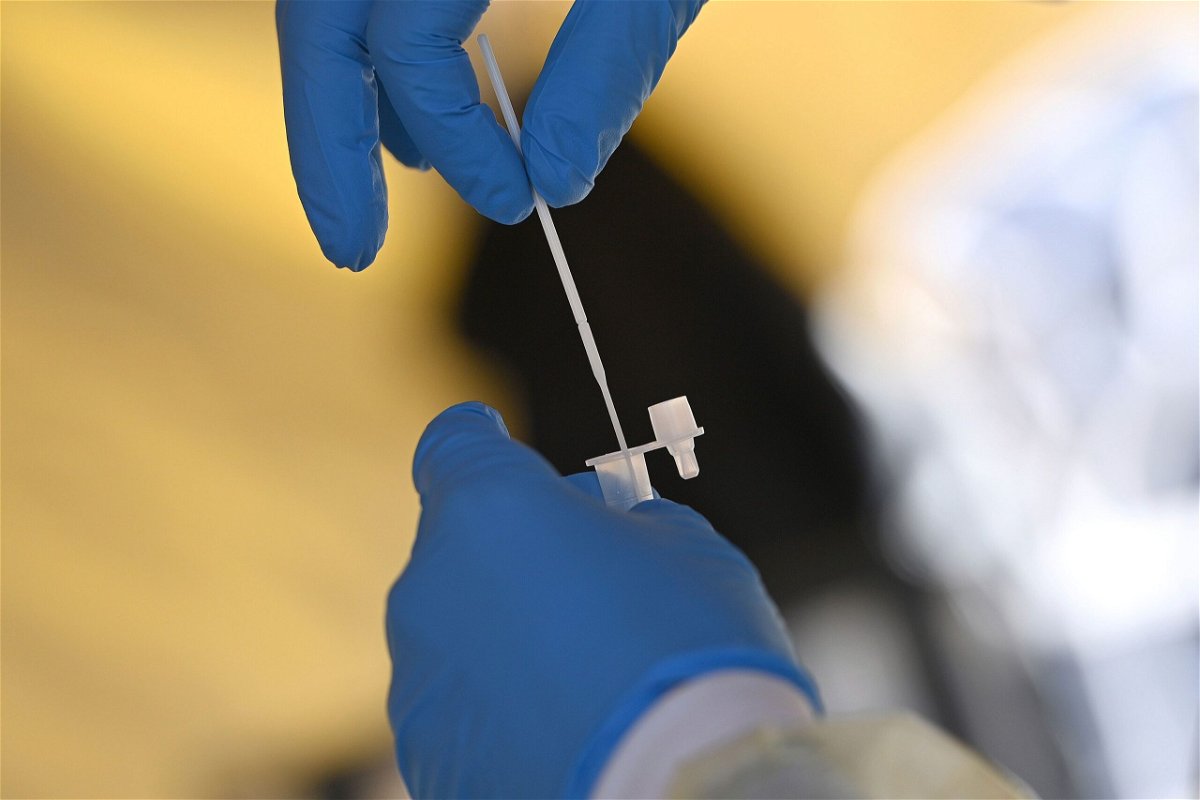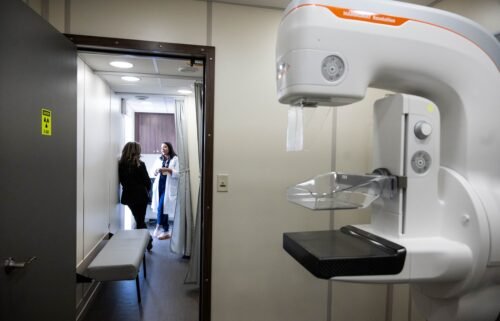US lab tests suggest new Covid-19 variant BA.2.86 may be less contagious and less immune-evasive than feared

Early results paint BA.2.86 as more of a paper tiger rather than the looming beast it first appeared to be.
By Brenda Goodman, CNN
(CNN) — Two teams of US scientists have completed lab experiments testing the antibodies from vaccinated and infected Americans to see how well they might be able to fend off currently circulating variants of the virus that causes Covid-19, including the highly mutated BA.2.86.
Their results match up almost exactly, and the news – at least when it comes to BA.2.86, which has also been dubbed Pirola – is very good. Our immune systems can recognize and fight off this variant as well as, and perhaps even a bit better than, the currently circulating offshoots of the XBB variant.
What’s more, people who had the most robust responses against BA.2.86 were those who were within six months of an infection with the XBB subvariant. This suggests that this fall’s updated Covid-19 vaccines, which are designed to fight off XBB.1.5, will provide added protection against a range of circulating Covid-19 lineages, including BA.2.86.
“Two independent labs have basically shown that BA.2.86 essentially is not a further immune escape compared with current variants,” Dr. Dan Barouch, director of the Center for Virology and Vaccine Research at Beth Israel Deaconess Medical Center and leader of one of the labs, told CNN.
Their results align with earlier experiments by labs in China and Sweden. Taken together, the data suggests that BA.2.86 will not be as troublesome as experts had feared. In short, this one seems to be a “scariant.”
But another variant, FL.1.5.1, which is causing an estimated 15% of new Covid-19 infections in the US, may be a different story. This fast-growing descendant of the XBB recombinant variant has a constellation of mutations that have raised the eyebrows of variant trackers. In lab testing, it was the most immune-evasive.
“If there wasn’t so much hype about BA.2.86, that would actually be the focus of the paper,” Barouch said.
Concurring findings
Barouch and his team used pseudoviruses: They built the spikes of the BA.2.86 virus and attached them to the body of a different virus. Then they took plasma, the clear part of the blood, from 66 Americans who had been vaccinated with monovalent vaccines only, who had gotten bivalent vaccines or who had recently recovered from an XBB infection, and tested how well their antibodies neutralized 10 Omicron subvariants including BA.2.86.
They found that across a range of different types of immunity, people were able to neutralize BA.2.86 as well as, and sometimes more effectively than, other circulating variants. The people with the highest neutralizing antibodies were those who had recently recovered from an XBB infection.
At the other lab, Dr. David Ho, a professor of microbiology and immunology at Columbia University, and his team used blood plasma from 61 adults: 17 who had gotten three monovalent vaccine doses and two bivalent vaccines, 25 who had recovered from a BA.2 breakthrough infection and 19 who’d recovered from an XBB breakthrough infection.
His results were substantially similar to Barouch’s. Across the range of immune profiles, antibodies in the blood were able to recognize BA.2.86 just as capably as they were other circulating variants. People with the highest degree of immunity against BA.2.86 were those who’d recovered from recent XBB infections.
That was a surprise because of how many mutations BA.2.86 has. Scientists had predicted that based on what was known about those specific mutations, it might be highly immune-evasive.
Barouch said he didn’t believe his first batch of results, so the lab worked all weekend to repeat the experiments. The results were the same.
“It was not exactly what I was expecting,” he said. “Now, they’ve been repeated, and so now we’re confident about them.”
Barouch said he has been asked to brief the White House and the US Centers for Disease Control and Prevention on his findings. “I think these results are pretty important,” he said.
A global effort
Scientists around the world are fast-tracking lab experiments to try to understand the BA.2.86 variant.
Four groups — the two US teams, as well as labs in China and Sweden — have reported results. The early results paint BA.2.86 as more of a paper tiger rather than the looming beast it first appeared to be, although that impression could change as more results come in.
BA.2.86 captured the world’s attention because it looks radically different than any other variants of the coronavirus that we’ve seen so far.
This new lineage has more than 30 changes to its spike protein compared with both its next closest ancestor, BA.2, and with the recently circulating XBB.1.5 lineage. It was an evolutionary leap on par with the one that the original Omicron variant, BA.1, made when it appeared almost two years ago — and everyone remembers how that went down.
During the Omicron wave, infections and hospitalizations hit their highest points of the pandemic in the United States. Weekly deaths reached their second-highest peak, a lesson in how even a tamer version of the virus can be a serious threat if it causes a tidal wave of infection across the population. The vaccines had to be updated.
Omicron quickly overtook other Covid-19 variants and began creating its own offshoots, viruses that we’re still dealing with. It became a lesson in how agile the virus can be and how fragile our defenses are in the face of such large shifts.
Not the ‘second coming of Omicron’
The White House was worried enough about another Omicron-level event that it quietly polled about a dozen experts earlier this year about the chances the world would see one within the next two years. Most experts pegged the possibility between 10% and 20%.
So when BA.2.86 appeared on the scene in late July with eerie echoes of Omicron, variant hunters were spooked, and researchers leapt into action to learn more about the new lineage. It has spread to at least 11 countries, including the United States.
The country reporting the most sequences so far is Denmark, and experts say they are closely watching the situation there for clues to its growth.
But only about three dozen sequences, from as many infected patients, have shown up in a global repository over the past month. Even with a lot less genetic surveillance than we once had, experts think that if BA.2.86 were coming on strong, it would be apparent.
“My friends, this is not the second coming of Omicron. If it were, it is safe to say we would know by now,” Dr. Bill Hanage, an epidemiologist who is co-director of Harvard University’s Center for Communicable Disease Dynamics, said in a social media post.
Now, scientists are in the midst of lab experiments to help us better understand how well our immune systems and vaccines will recognize and defend against viruses in the BA.2.86 family.
Early studies offer reassurance
In the first series of experiments, using the blood of vaccinated mice and from vaccinated and recently infected people, researchers in China determined that BA.2.86 does look really different to our immune systems compared with previous versions of the virus that causes Covid-19, and it is able to escape some of our immunity.
Researcher Yunlong Cao from the Biomedical Innovation Center at Peking University said he saw a twofold drop in the ability of our immunity from vaccination and recent infection to neutralize the BA.2.86 virus compared with viruses from the XBB.1.5 family.
A twofold drop isn’t wonderful, but it’s also not huge. By comparison, an eightfold drop in the ability of vaccine-created immunity to neutralize a new influenza virus is the benchmark scientists use to update the flu shot.
At the same time, the BA.2.86 variant was about 60% less infectious than XBB.1.5 viruses, something that experts think could explain why it has been found in so many different countries, but only at low levels.
“I would say it will slowly circulate in the population. It will not be able to compete with other fast prevailing variants,” Cao noted in an email to CNN, referring to variants like EG.5 and FL.1.5.1, which are currently dominating transmission in the United States.
In a second set of experiments, researchers at the Karolinska Institute in Sweden pitted BA.2.86 against antibodies in the blood of human donors that were collected at two points in time: from late 2022, before the XBB variant emerged, and from late August.
The antibodies in the older samples couldn’t effectively shut down BA.2.86, but the blood samples taken from donors just a week ago did a better job.
“Overall, it doesn’t appear to be nearly as extreme a situation as the original emergence of Omicron,” wrote principal researcher Benjamin Murrell in a post on social media.
“It isn’t yet clear whether BA.2.86 (or its offspring) will outcompete the currently-circulating variants, and I don’t think there is yet any data about its severity, but our antibodies do not appear to be completely powerless against it,” he wrote.
More to learn
All of these studies have limitations. Researchers were testing pseudoviruses, which are essentially models of what the BA.2.86 virus looks like, not the virus itself. The study from Sweden used only a small number of samples from blood donors. And because these studies used blood donors in China and Sweden, they may not reflect the immunity of people in the US, who may have been infected with a different mix of variants and immunized with different vaccines.
Still, experts said they were encouraged by these early results and eager to see more.
“The news is better than I was expecting,” said Dr. Ashish Jha, former White House Covid-19 response coordinator, in a post on social media. “And makes me more encouraged that the new upcoming vaccine will have a real benefit against current dominant variant (EG.5) as well as BA.2.86.”
The Variant Technical Group at the UK’s Health Security Agency met last week to consider whether BA.2.86 should be reclassified from a “variant under monitoring” in that country to a “variant of concern.”
In an update posted Friday, the group concluded that BA.2.86 doesn’t meet its definition of a variant of concern because it doesn’t have any evidence that the profile represents a harmful change to its biological properties or a growth rate suggesting it would move at least as fast as or faster than currently circulating variants.
The group said that two samples of the virus are being cultured in the UK and that data from those lab experiments are likely to be at least one or two weeks away. Meanwhile, the group is watching for results from international partners.
They, like the rest of the world, are waiting for BA.2.86 to show its hand.
The-CNN-Wire
™ & © 2023 Cable News Network, Inc., a Warner Bros. Discovery Company. All rights reserved.



